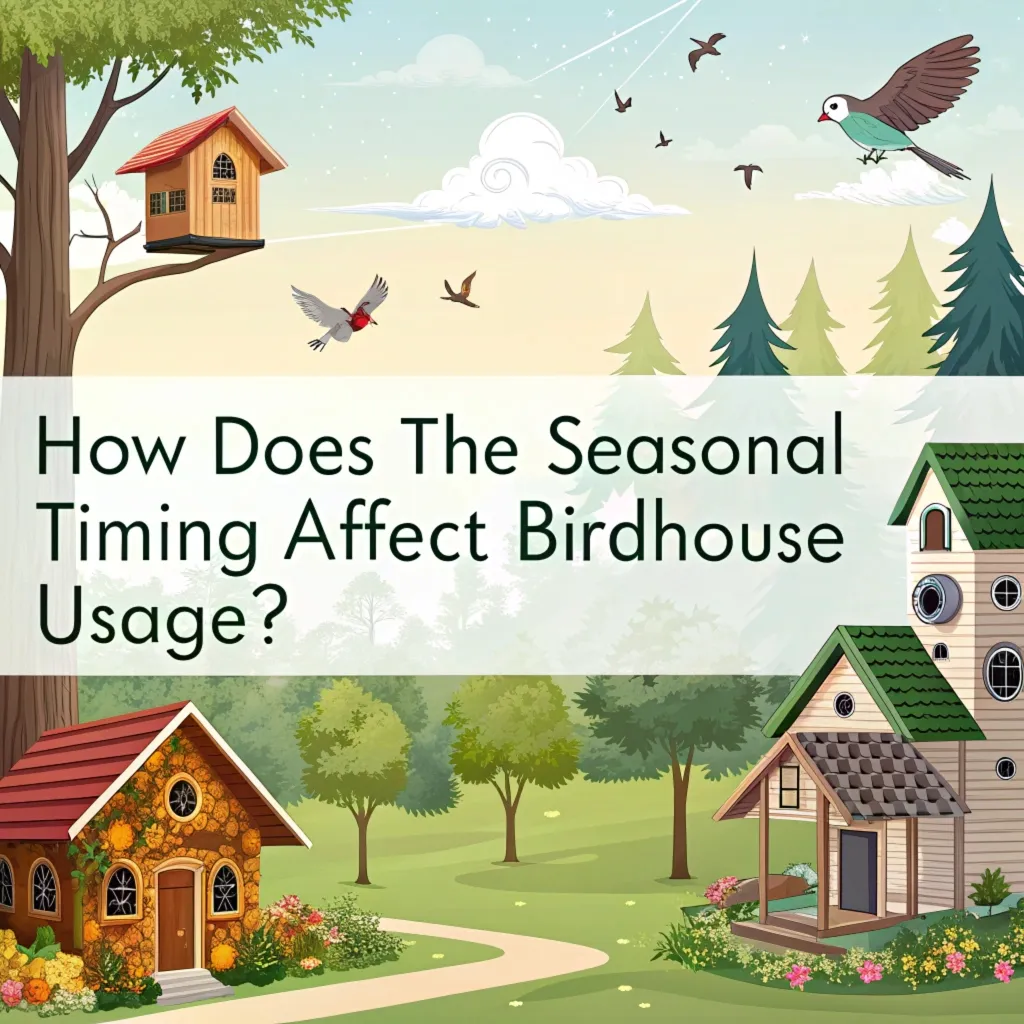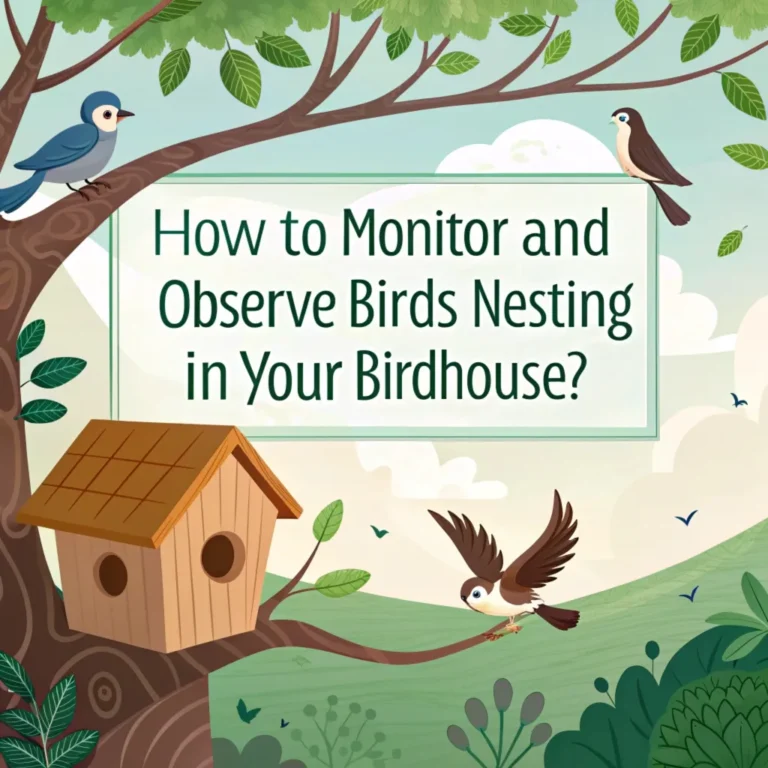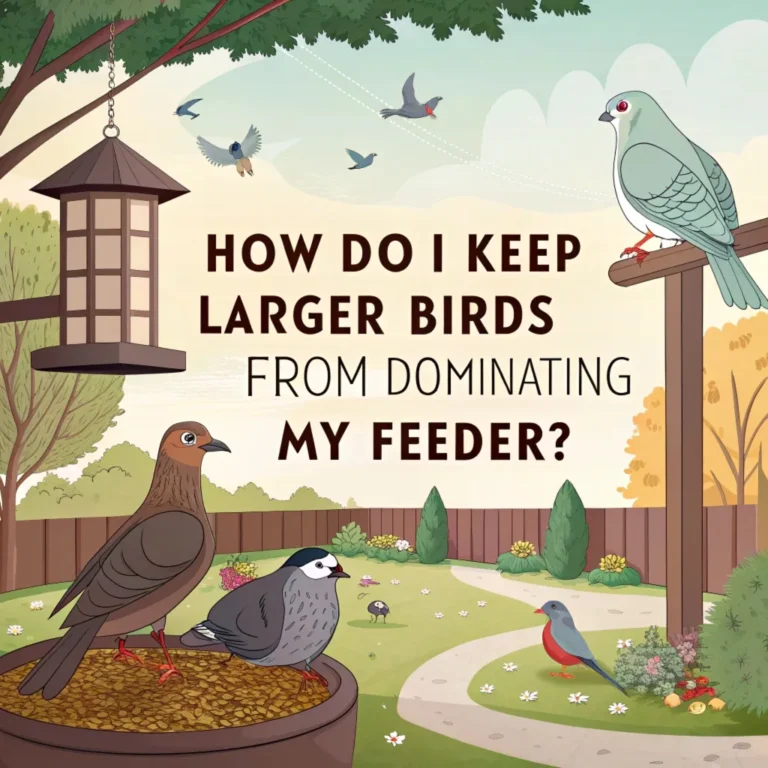How Does the Seasonal Timing Affect Birdhouse Usage?
The timing of birdhouse placement and maintenance plays a crucial role in attracting nesting birds and ensuring successful breeding.
Birds are highly influenced by seasonal changes, and understanding these patterns can help bird enthusiasts create an optimal environment for nesting.
This comprehensive guide explores how seasonal timing affects birdhouse usage, offering practical advice and insights to ensure that your birdhouses remain inviting throughout the year.
Let’s dive into the fascinating connection between seasons and bird behavior!
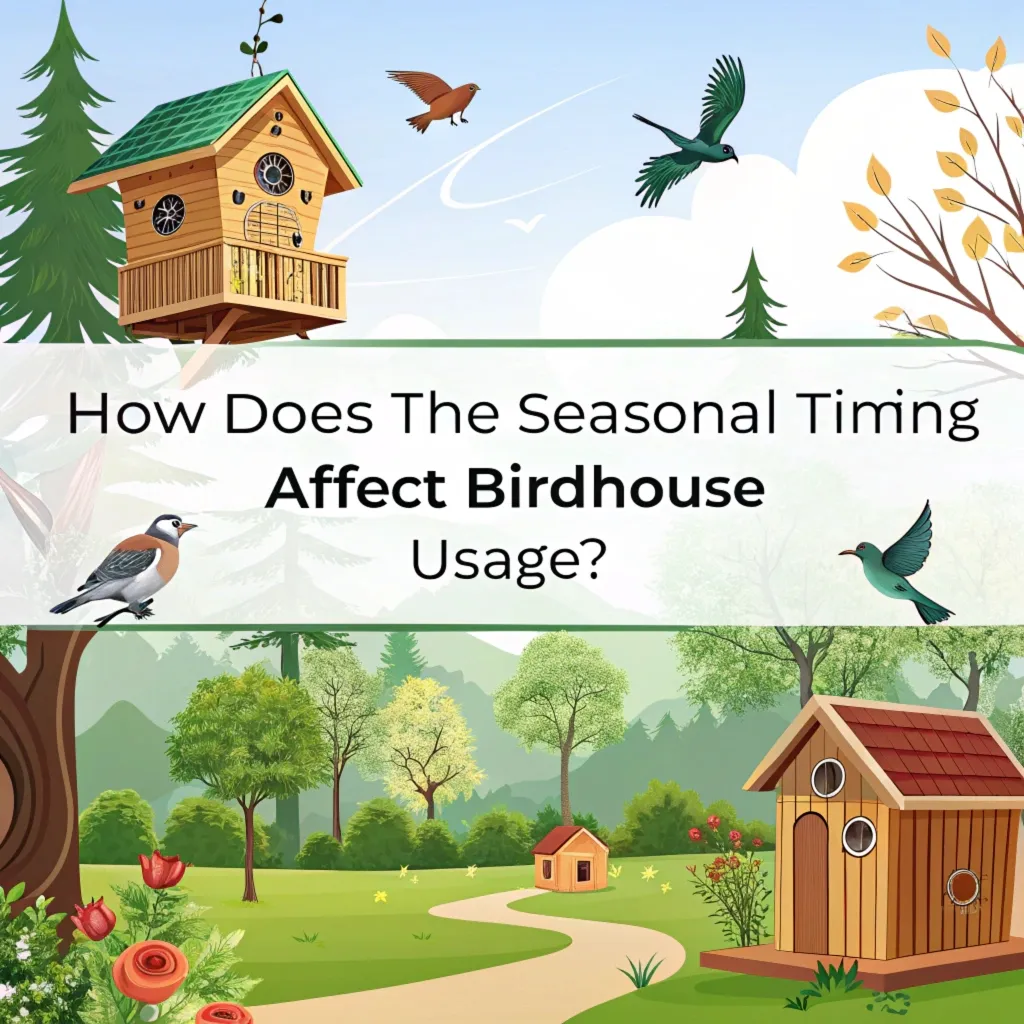
Key Takeaways
- Early preparation is essential for attracting nesting birds.
- Spring is the primary nesting season for most bird species.
- Climate change is altering traditional nesting patterns.
- Regular maintenance of birdhouses is crucial for bird health.
- Different species have varying nesting timelines.
- Year-round availability of birdhouses can benefit birds.
- Proper placement and design of birdhouses impact usage.
- Monitoring nesting activity helps understand local bird populations.
- Cleaning birdhouses after nesting season is important for future use.
- Adapting to changing patterns ensures continued birdhouse success.
Understanding Seasonal Bird Behavior
Birds exhibit distinct seasonal patterns in their nesting behavior. The timing of breeding is crucial for birds to align with favorable environmental conditions.
Most bird species in North America start their nesting activities in early spring, taking advantage of increasing daylight and abundant food sources like insects, seeds, and fruits. These resources are critical for raising their young successfully.
Additionally, some birds adjust their behaviors based on local climate conditions. For example, birds in warmer regions may start nesting earlier than those in colder climates.
Understanding these variations can help you better cater to the needs of local species by aligning your birdhouse placement with their natural cycles.
The Importance of Early Birdhouse Placement
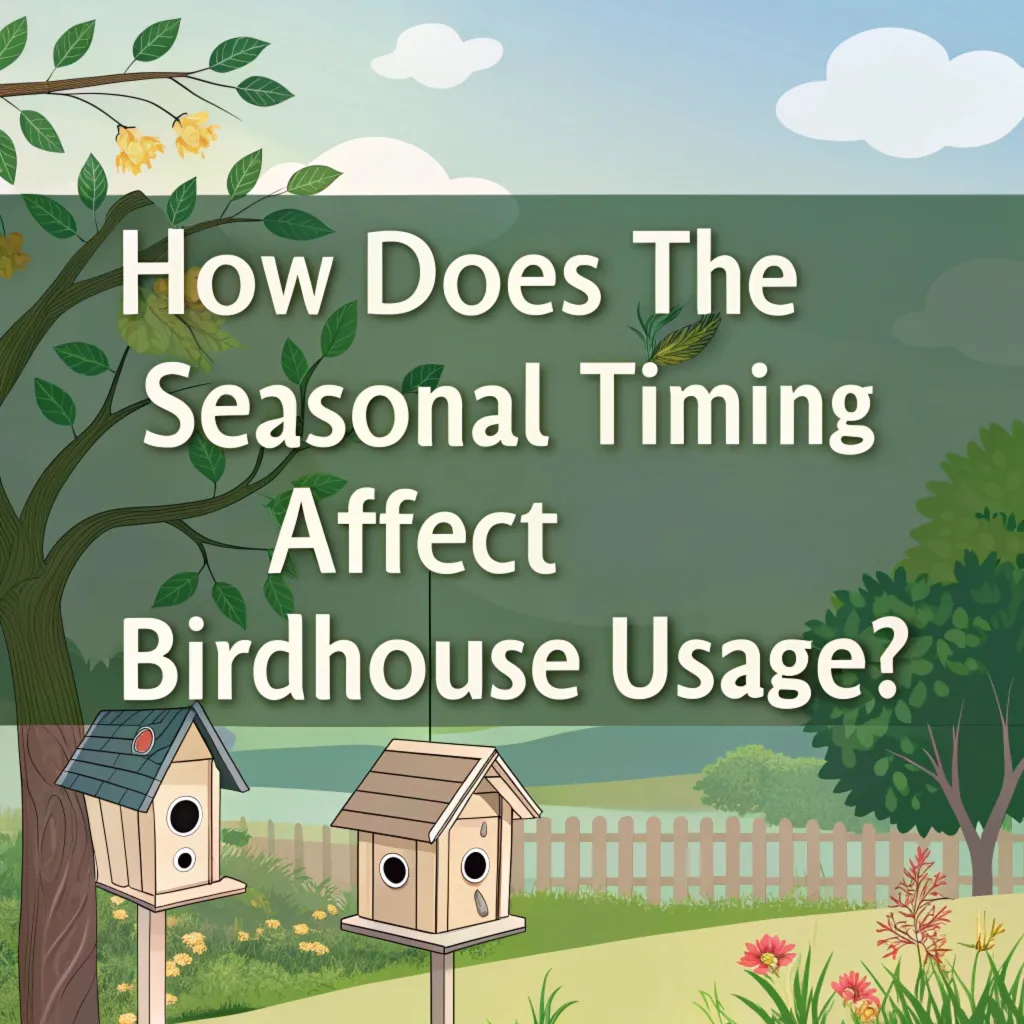
Placing birdhouses well before the nesting season is crucial for attracting birds. Many species begin scouting potential nest sites as early as January or February in the Northern Hemisphere.
Having your birdhouses ready by this time increases the chances of attracting nesting pairs who are seeking safe, sheltered locations.
Early placement also allows time for the birdhouse to “weather” naturally, which helps reduce any chemical smells or bright colors that might deter birds.
This simple step ensures that your efforts to provide a safe haven for birds are met with success.
Climate Change and Shifting Nesting Patterns
Recent studies reveal that climate change is significantly altering traditional nesting timelines. Many species are now arriving earlier on their breeding grounds due to warmer temperatures and starting to nest sooner than they did decades ago.
Short-distance migratory birds are particularly affected, as they adjust their schedules based on local conditions.
However, long-distance migratory birds face challenges because their migration is triggered by internal cues rather than environmental changes.
As a result, they may miss optimal nesting windows or struggle with food scarcity upon arrival. Adapting your birdhouse maintenance schedule to these shifts can help mitigate some of these challenges.
Species-Specific Timing Considerations
Different bird species have unique nesting schedules, which means that timing your preparations according to their habits is essential. For example:
- Bluebirds and Tree Swallows often begin nesting in early spring.
- House Wrens typically start later in the season.
- American Robins may produce multiple broods throughout spring and summer.
By understanding which species frequent your area, you can better prepare your birdhouses to accommodate their specific needs.
This targeted approach not only increases usage but also supports the health of local populations.
Year-Round Benefits of Birdhouses
Birdhouses offer more than just a place for birds to nest—they provide year-round benefits such as shelter during harsh weather conditions.
In colder months, many birds use them as roosting sites to stay warm and protected from predators.
Maintaining your birdhouses throughout the year ensures they remain functional and inviting for both nesting and roosting purposes.
By doing so, you create a safe space for birds regardless of the season, contributing to their overall well-being.
Optimal Timing for Birdhouse Maintenance
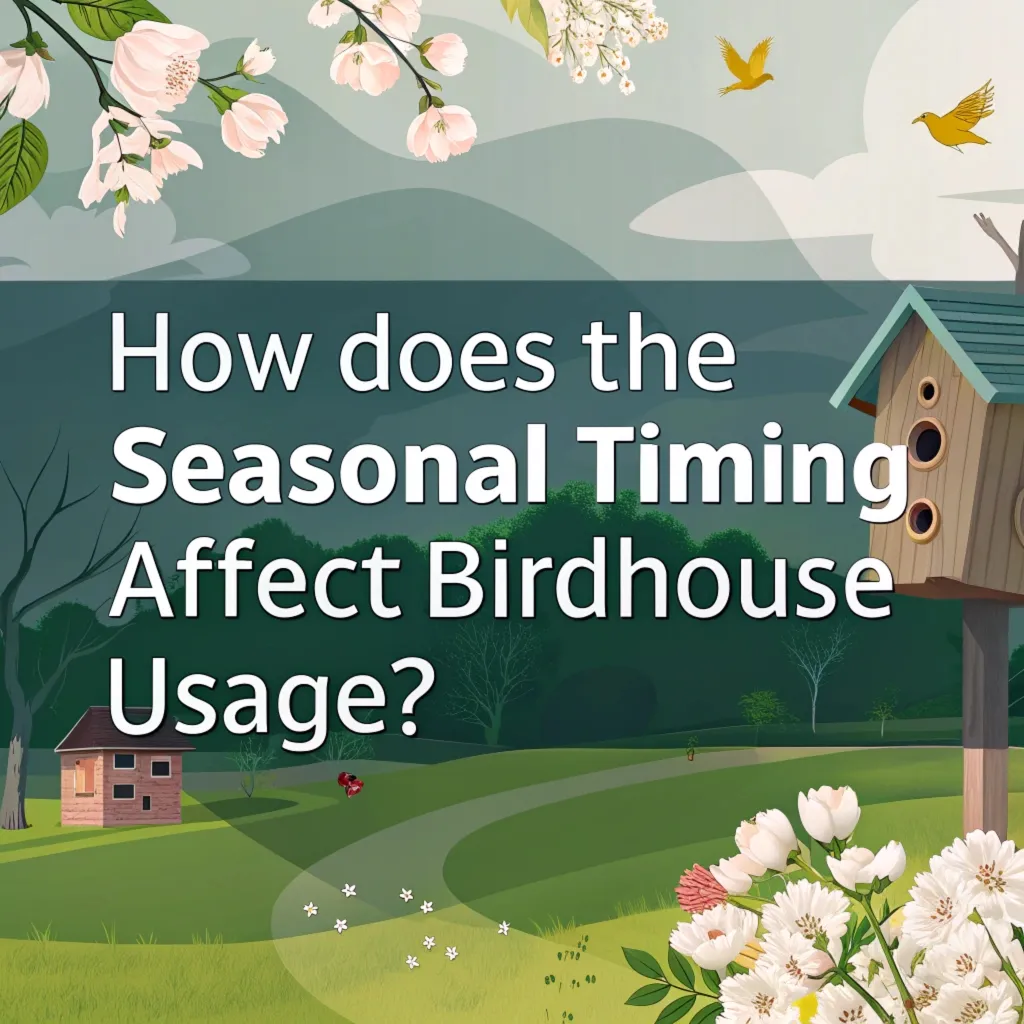
Regular maintenance is key to keeping your birdhouses effective and safe for use. The best times for maintenance include:
- Late winter: Clean and repair houses before the nesting season begins.
- Mid-summer: Check houses between broods if multiple nests occur.
- Fall: Thoroughly clean after the breeding season ends to prepare for winter roosting.
Ensuring that your birdhouses are clean and parasite-free not only encourages reuse but also protects the health of future occupants.
Adapting to Multiple Broods
Many species produce multiple broods during a single breeding season, especially in warmer climates or when food is abundant.
Cleaning out old nests between broods helps remove parasites and keeps the house fresh for new occupants.
Providing clean, safe spaces encourages birds to return repeatedly throughout the season, maximizing the utility of each house you’ve installed.
The Impact of Microclimate on Nesting
The microclimate around a birdhouse—factors like temperature, sunlight exposure, and humidity—can greatly influence its usage.
For instance, placing a house in direct sunlight during summer may make it too hot for nesting birds.
Choose shaded or partially shaded locations that offer protection from extreme weather conditions while still being accessible to birds. This thoughtful placement ensures comfort and safety for both adults and chicks.
Monitoring Nesting Activity
Monitoring your birdhouses discreetly provides valuable insights into local populations and breeding success rates.
Keep a journal or logbook to track activity such as when nests are built, eggs are laid, or chicks fledge.
This data helps you understand trends over time while ensuring you don’t disturb the delicate process of raising young birds.
It’s an excellent way to connect with nature while contributing valuable information about your local ecosystem.
The Role of Food Availability
Food availability plays a critical role in determining when birds nest. Most species time their breeding cycles with periods of abundant food resources like insects or seeds needed to feed their chicks.
Supplementary feeding near your birdhouses can help support parents during lean periods or unexpected shortages caused by weather fluctuations or habitat loss.
Adapting to Urban Environments
Urban environments often present unique challenges—and opportunities—for nesting birds.
Artificial lighting may cause some species to begin nesting earlier than usual, while milder climates extend breeding seasons compared to rural areas.
Adjusting your strategies based on these urban-specific factors ensures that even city-dwelling birds have access to safe, functional homes throughout the year.
Preparing for Late-Season Nesters
While most birds nest in early spring, some species—like American Goldfinches—are late-season nesters who prefer summer months when seeds are abundant.
Keeping your houses clean and available throughout summer ensures these latecomers have access to suitable homes as well.
This practice maximizes the utility of your efforts while supporting diverse populations across different timelines.
FAQs
When is the best time to put up a birdhouse?
The best time is late winter or early spring, just before most species begin scouting for nests.
How often should I clean my birdhouse?
Clean at least once annually in late fall; if multiple broods occur, clean between each brood as well.
Can birds use birdhouses in winter?
Yes! Many use them as roosting sites, offering warmth during cold months.
How does climate change affect birdhouse usage?
Climate change causes earlier arrivals/nesting; adapting preparation schedules mitigates its effects.
Are there late-season nesters?
Yes! Species like American Goldfinches prefer late summer; keeping houses available benefits these populations too!

Luna is the passionate founder and author of Birds and You, a website dedicated to sharing her love for birds with fellow enthusiasts. Through her engaging articles and guides, she aims to educate and inspire others to explore the fascinating world of birds. When she’s not writing, you can find Luna observing birds in their natural habitats or sharing beautiful bird photography on Pinterest. Join her on this journey to celebrate and protect our feathered friends!

